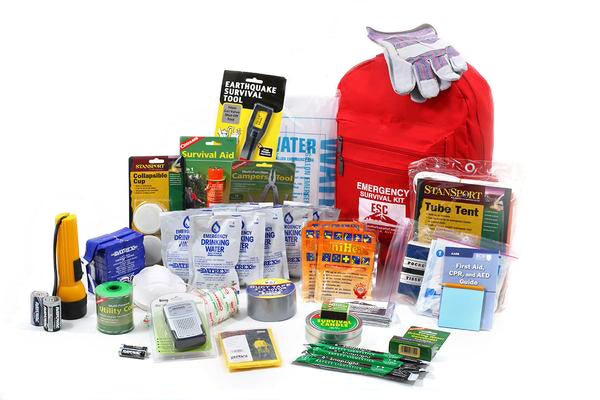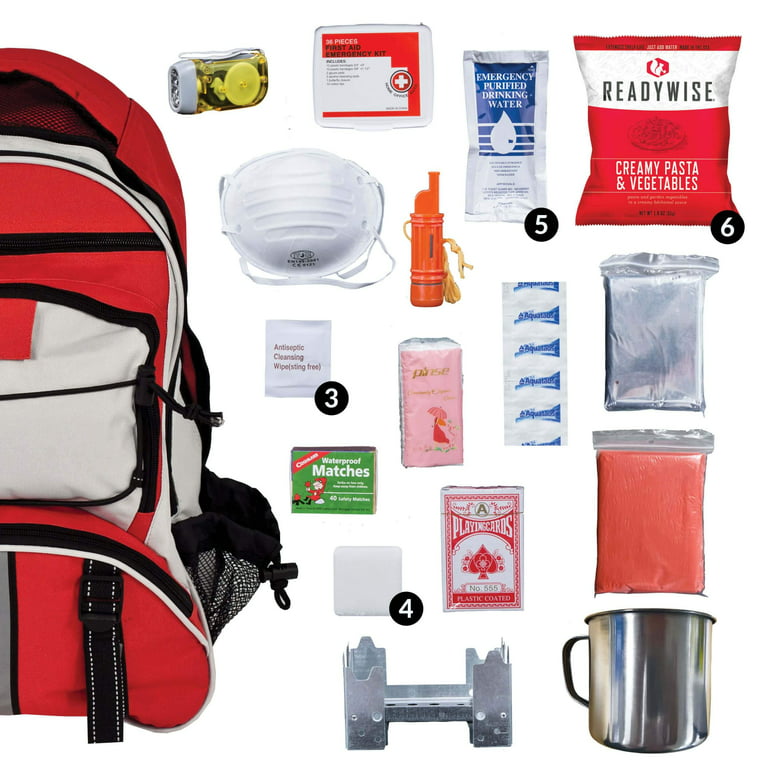Emergency Preparedness: Structure a Safer, Stronger Area With Each Other
Emergency Preparedness: Structure a Safer, Stronger Area With Each Other
Blog Article
How to Develop an Extensive Emergency Situation Readiness Strategy
In the world of preparedness, establishing a thorough emergency situation strategy is not simply a task to mark off a list; it is a crucial cornerstone of any kind of organization or individual's durability approach. From all-natural disasters to unforeseen situations, the capacity to anticipate, alleviate, and react successfully can suggest the difference between chaos and control. By thoroughly crafting a strategy that deals with different aspects of emergency situation monitoring, consisting of threat evaluation, communication methods, source allowance, and calculated decision-making, one can lay a strong structure for securing lives, assets, and operations. However, truth effectiveness of such a strategy lies not only in its development yet likewise in its ongoing maintenance and adjustment to progressing obstacles and hazards.
Relevance of Emergency Situation Readiness
Emergency situation preparedness is vital for mitigating potential risks and making sure the safety of people and communities. In today's world, where all-natural disasters, public wellness situations, and other emergencies can strike without caution, being prepared can make a considerable distinction in reducing the effect of these events. By having a well-balanced emergency preparedness plan in position, people and organizations can respond properly, shield lives, and decrease residential or commercial property damages.
Among the main factors why emergency situation preparedness is essential is its function in saving lives. When emergency situations take place, having a plan that describes clear procedures for emergency situation, interaction, and discharge feedback can help people act quickly and emphatically. This can avoid injuries and casualties by making sure that individuals recognize what steps to require to stay secure
Additionally, emergency situation readiness improves the durability of communities. By cultivating a culture of readiness and preparation for numerous circumstances, communities can recuperate a lot more swiftly from catastrophes and disturbances. This durability is important for maintaining security, connection of procedures, and overall wellness despite misfortune.
Assessing Possible Risks
Thinking about the value of being planned for unanticipated events, the preliminary action in developing an efficient emergency preparedness strategy entails thoroughly assessing and examining possible risks. This assessment calls for an extensive evaluation of all possible dangers that might impact the company, considering aspects such as place, sector, and historic data on cases. By determining these threats, organizations can prioritize their readiness efforts and allot sources effectively to reduce one of the most substantial hazards.
Typical threats that companies might deal with include all-natural calamities like floodings, quakes, or cyclones, technological risks such as power outages or information violations, in addition to human-caused threats like crashes or deliberate acts of violence. Performing a danger assessment also includes considering the possible impact of these occasions on the organization's procedures, workers, consumers, and online reputation. By carrying out a detailed danger analysis, organizations can create tailored emergency response strategies that resolve their particular susceptabilities and ensure efficient preparedness for any type of prospective situation.
Creating a Communication Strategy
Creating a clear and detailed interaction plan is important for reliable emergency readiness within organizations. In times of dilemma, interaction plays an important role in making certain the safety and well-being of staff members, stakeholders, and the community. A well-balanced interaction plan must lay out clear lines of communication, assign vital workers in charge of communication jobs, and develop methods for disseminating information swiftly and properly.
One trick aspect of creating a communication plan is determining alternating and main interaction channels (EMERGENCY PREPAREDNESS). These can consist of e-mail, message messaging, phone trees, social media platforms, and public address systems. It is critical to make sure that these networks are trusted, accessible, and regularly tested to guarantee their effectiveness during emergencies

Structure an Emergency Package
Given the important importance of readiness in times of situation, a vital part that organizations must attend to is the facility of an emergency kit. When setting up an emergency situation set, it is vital to take into consideration the particular requirements and conditions of the organization. Furthermore, companies need to consist of essential files, such as get in touch with lists, insurance coverage info, and emergency response plans, in water resistant containers within the set.
Establishing Discharge Procedures
To make sure the security and orderly evacuation of employees during emergencies, organizations need to develop effective and clear emptying procedures. Evacuation treatments must incorporate a variety of prospective circumstances, consisting of fires, natural calamities, or other emergency situations that call for swift discharge.

Furthermore, organizations ought to develop a system for bookkeeping for all personnel throughout a discharge to make sure that everybody has securely exited the facilities. Communication plays a crucial duty in emptying procedures, with clear guidelines on exactly how to evacuate and when to do so. Routine evaluation and updating of emptying procedures based on feedback and changing conditions are necessary to keeping the effectiveness of the plan.
Final Thought
In verdict, developing a thorough emergency situation readiness strategy is important for guaranteeing the security and wellness of individuals in case of a catastrophe (EMERGENCY PREPAREDNESS). By analyzing potential dangers, creating a communication plan, building an emergency situation package, and establishing emptying treatments, companies and people can be much better furnished to respond effectively to emergency situations. It is necessary to prioritize readiness efforts to alleviate the influence of calamities and safeguard lives and building
In the world of preparedness, developing an extensive emergency situation plan is not just a task to inspect off a list; it is a crucial foundation of any company or person's durability method. When emergencies happen, having a plan that lays out clear procedures for evacuation, communication, and emergency reaction can assist people act promptly and decisively. read this post here. By carrying out a thorough danger assessment, organizations can create tailored emergency reaction strategies that resolve their certain susceptabilities and make certain reliable readiness for any potential situation
Developing a clear and detailed interaction strategy is crucial for reliable emergency preparedness within companies. By analyzing prospective threats, developing an interaction strategy, developing an emergency situation set, and establishing discharge people, treatments and organizations can be much better geared up to react successfully to emergency situations.
Report this page